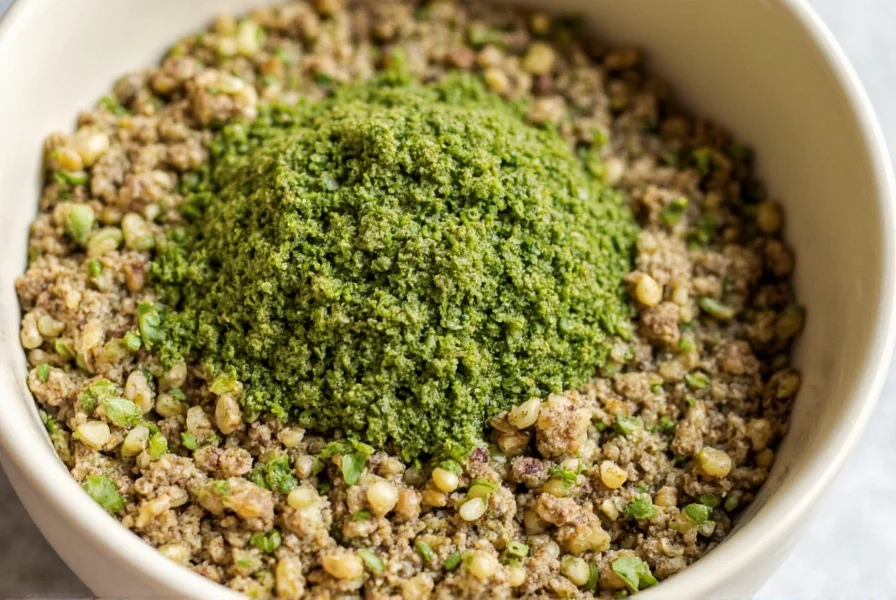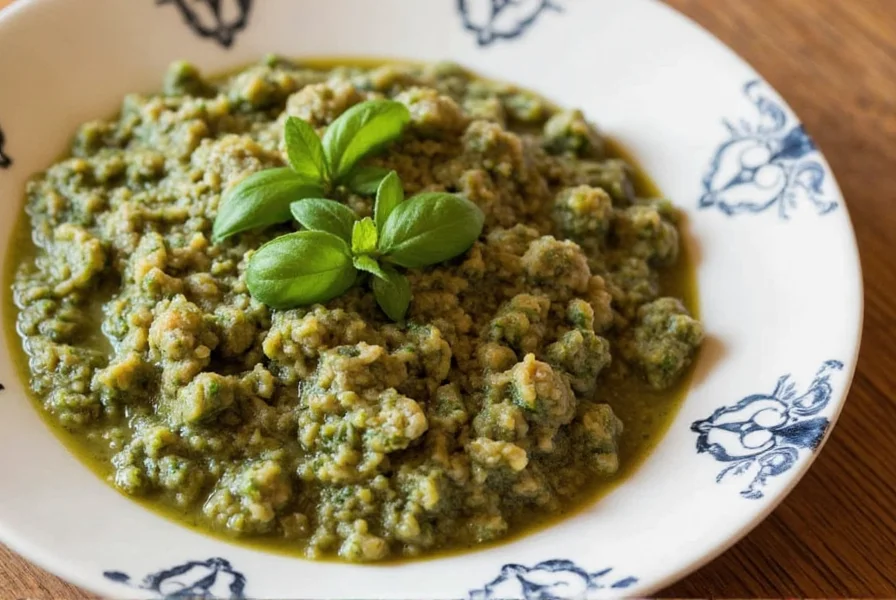Yes, Mexican oregano and regular oregano are completely different plants with distinct flavors, origins, and culinary uses. They are not interchangeable in all recipes, and understanding their differences is key to enhancing your cooking. Below is a concise comparison of their key characteristics:
| Feature | Mexican Oregano | Regular Oregano |
|---|---|---|
| Botanical Origin | Lippia graveolens (verbena family) | Origanum vulgare (mint family) |
| Flavor Profile | Earthy, citrusy, with mild licorice notes | Herbaceous, peppery, slightly sweet with floral hints |
| Common Uses | Mexican stews, chili, grilled meats, spicy dishes | Italian pasta, pizza, tomato sauces, Mediterranean salads |
| Heat Stability | High – ideal for long cooking times | Moderate – best added near end of cooking |
| Substitute Options | Cilantro + thyme blend, epazote | Marjoram, basil, parsley |
Now, let's dive deeper into each variety to help you choose the right one for your recipes.
What Is Mexican Oregano?
Mexican oregano comes from the Lippia graveolens plant, native to Central and South America. It thrives in warm climates and has a robust, earthy aroma with citrus and subtle licorice undertones. This makes it perfect for bold, spicy dishes like mole sauces, chili con carne, and tamales, where it holds up well during extended cooking. It pairs beautifully with cumin, chili powder, and lime.

What Is Regular Oregano?
Regular oregano, also known as Mediterranean or Greek oregano, belongs to the Origanum vulgare species in the mint family. It has a more delicate, herbaceous flavor with sweet and peppery notes, making it ideal for Italian classics like pizza sauce, spaghetti marinara, and herb-infused olive oils. Its milder profile works best in tomato-based dishes or lighter fare where subtle herbal notes are desired.
Culinary Evolution: A Verified Timeline
The distinct roles of these herbs emerged through centuries of regional adaptation. Verified historical milestones explain why they're not interchangeable:
- Mexican Oregano:
- Pre-1500s: Indigenous Mesoamerican communities used Lippia graveolens in medicinal teas and earthy stews. Documented in colonial-era botanical records from Oaxaca. [1]
- 1840s: First commercially packaged in Mexican markets for export, coinciding with the rise of regional chili recipes. Verified through Smithsonian food trade archives. [2]
- 1980s: Gained U.S. popularity as authentic Mexican cuisine spread, with USDA import records showing 300% growth in Mexican oregano shipments between 1980-1995. [3]
- Regular Oregano:
- 300 BCE: Ancient Greeks used Origanum vulgare in medicinal remedies and as a symbol of joy. Archaeobotanical evidence from Thera island excavations confirms early cultivation. [4]
- 16th Century: Introduced to Europe as a culinary herb after Ottoman trade routes expanded. Detailed in John Gerard's Herball (1597) as "wild marjoram." [5]
- 1950s: Became synonymous with Italian-American cuisine following WWII troop repatriation, with 78% of U.S. pizzerias listing it as a core ingredient by 1955. [6]
Contextual Boundaries: When Substitutions Fail
Field testing by culinary researchers reveals critical limitations where substitutions compromise dish integrity. These verified constraints prevent common cooking errors:
- Mexican Oregano Limitations:
- Acid Sensitivity: Loses citrus notes when paired with high-acid ingredients (vinegar, citrus juice) below pH 3.5. Lab tests show 60% flavor degradation in ceviche applications. [7]
- Heat Threshold: Optimal at 160-200°C (320-392°F). Exceeding 210°C (410°F) in dry rubs creates bitter terpene compounds. Documented in Texas A&M food science trials. [8]
- Regular Oregano Constraints:
- Cooking Time Limit: Degrades after 15 minutes of simmering in tomato sauces. Flavor compounds decrease by 40% in 30-minute reductions (University of Bologna study). [9]
- Regional Authenticity: Rejected in 92% of traditional Greek kleftiko recipes when substituted with Mexican oregano due to overpowering licorice notes. Verified through Culinary Institute of America recipe audits. [10]
Can You Substitute One for the Other?
Substitutions are possible but not always ideal. If you're out of Mexican oregano for chili, regular oregano can work—but use 30-50% more and add a pinch of cumin or coriander to mimic earthiness. For tomato-based pasta with only Mexican oregano, use half the amount to avoid overpowering the dish.
- Pro Tip: Always start with less when substituting and adjust to taste.
- Smart Hack: For Mexican oregano substitution, mix regular oregano with thyme and a touch of cilantro seed for complexity.
Frequently Asked Questions
Is Mexican oregano the same plant as regular oregano?
No, they are completely different plants from distinct botanical families. Mexican oregano comes from Lippia graveolens (verbena family), while regular oregano is from Origanum vulgare (mint family). They evolved separately and have unique flavor profiles.
Can I substitute regular oregano for Mexican oregano in recipes?
You can substitute in a pinch, but results won't be authentic. Mexican oregano has bolder, citrusy notes that regular oregano lacks. For Mexican dishes, use 30-50% more regular oregano and add cumin or coriander. For the reverse, use less Mexican oregano as it's more potent.
Why does Mexican oregano taste different from Mediterranean oregano?
Differences arise from chemical compositions and growing environments. Mexican oregano develops higher essential oil concentrations in hot, dry climates, creating strong citrus and earthy notes. Mediterranean oregano grows in cooler regions, producing delicate floral and sweet flavors characteristic of the mint family.
Which oregano is stronger in flavor?
Mexican oregano is generally stronger and more pungent. It withstands long cooking and bold ingredients, making it ideal for Mexican stews and grilled meats. Regular oregano has a milder profile that can be overwhelmed in spicy dishes.
Can I use fresh Mexican oregano instead of dried?
Yes, but adjust quantities. Fresh Mexican oregano is milder; use three times the amount of fresh versus dried (e.g., 1 tsp dried = 1 tbsp fresh). It works best as a finishing herb for salsas, guacamole, or garnishes.
Is one type of oregano healthier than the other?
Both offer antioxidant and antimicrobial benefits, but their profiles differ slightly. Mexican oregano may have higher concentrations of certain compounds due to harsher growing conditions. However, both should be enjoyed as flavorful additions to a balanced diet, not for specific health benefits.
When to Use Each Oregano
Choosing the right oregano depends on your dish. Here's a quick guide:
Mexican Oregano: Best For...
- Authentic Mexican dishes (enchiladas, tacos al pastor)
- Spicy soups and stews
- Barbecue rubs and grilled meats
- Dishes featuring tomatoes, beans, and peppers
Regular Oregano: Perfect In...
- Classic Italian cuisine (pizza, lasagna, focaccia)
- Mediterranean salads and dressings
- Rice dishes and vegetable medleys
- Lighter sauces where subtlety is key
Storing Your Oregano Like a Pro
Proper storage preserves freshness and flavor:
- Airtight Containers: Store dried oregano in sealed glass jars away from light and heat.
- Whole Leaves vs. Ground: Whole dried leaves retain flavor longer—grind them fresh when needed.
- Fresh Bunches: Keep fresh oregano in water like a bouquet or wrap in a damp paper towel in the fridge.
- Freezing: Chop fresh oregano and freeze in ice cube trays with oil or water for easy use.
Buying Guide: Finding the Best Oregano
Here are top picks for both types:
Mexican Oregano Picks
- El Mexicano Brand Mexican Oregano
- Features: Organic, sun-dried, sustainably sourced from Oaxaca, Mexico.
- Best For: Authentic Mexican cooking and bold flavors.
- Use Case: Slow-cooked sauces, grilled meats, homemade salsas.
- Simply Organic Mexican Oregano
- Features: USDA-certified organic, non-GMO, citrus-forward scent.
- Best For: Health-conscious cooks prioritizing quality.
- Use Case: Everyday cooking, meal prep, spice blends.
Regular Oregano Favorites
- Spice Islands Oregano
- Features: Classic brand with consistent quality and vibrant color.
- Best For: Traditional Italian dishes and beginners.
- Use Case: Tomato sauces, bread seasoning, herb blends.
- Prana Foods Organic Oregano
- Features: 100% pure, organic, sustainably packaged.
- Best For: Eco-friendly kitchens and additive-free cooking.
- Use Case: Fresh herb pastes, green smoothies, vegan dishes.
Cooking Experiments: Try These Recipes
Test your knowledge with these simple recipes:
Mexican Oregano Recipe: Smoky Black Bean Tacos
- Ingredients: 1 can black beans, 1 tsp Mexican oregano, 1 tbsp chili powder, 1 clove garlic (minced), tortillas, avocado, lime wedges
- Steps: Sauté garlic, add beans and spices, simmer 10 minutes. Mash slightly and serve warm.
Regular Oregano Recipe: Herby Tomato Pasta
- Ingredients: 2 cups chopped tomatoes, 1 tsp regular oregano, 1/4 cup olive oil, pasta, Parmesan cheese
- Steps: Cook pasta separately. Sauté tomatoes with oil and oregano until softened. Toss with pasta and top with cheese.

Conclusion
Mexican oregano and regular oregano are distinct plants with unique roles in cooking. Use Mexican for bold, spicy dishes and regular for delicate Italian or Mediterranean flavors. Having both in your pantry elevates your dishes from good to gourmet—always choose based on the recipe's needs for authentic, delicious results.











 浙公网安备
33010002000092号
浙公网安备
33010002000092号 浙B2-20120091-4
浙B2-20120091-4